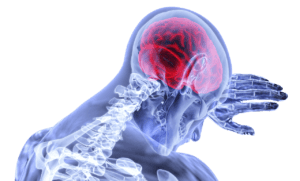Intracranial Hypertension (IH)
What is intracranial hypertension?
Intracranial hypertension (IH) is a condition that occurs when the pressure inside the skull increases for no discernible reason. It is likely due to a build up of cerebrospinal fluid (CSF). IH mimics the symptoms of a brain tumor, however, no tumor is present in cases of IH. This is why IH is also sometimes referred to as pseudotumor cerebri.What are the symptoms of intracranial hypertension?
Symptoms of IH are often similar to those of patients with large brain tumors. Symptoms include:- Moderate to severe headache originating behind the eye and worsening with eye movement
- Ringing in the ears that matches pulse of heartbeat (pulsatile tinnitus)
- Nausea, vomiting, dizziness
- Blurred or dimmed vision
- Episodes of brief blindness (lasting a few seconds)
- Difficulty with peripheral vision
- Double vision
- Perceived flashes of light
- Neck, shoulder, back pain
What causes intracranial hypertension?
The causes of IH are currently unknown. Women aged 20-35 seem to be the most affected by IH. Obesity also seems to play a significant factor. Most research seems to suggest a resistance or obstruction to CSF flow through normal pathways plays a large part in causing IH.How is intracranial hypertension diagnosed?
Diagnosis for IH may include an eye examine to test for papillidema (a swelling of the optic nerve), and blind spots. MRI and CT scan can be useful tools in ruling out other disease with similar symptoms. Your doctor may also order a lumbar puncture or spinal tap to test the pressure inside of the skull.What are the treatments for intracranial hypertension?
Once a diagnosis of IH is confirmed, repeated eye exams will be necessary to monitor changes in vision. Medications can be prescribed to reduce the build up of fluids inside the skull and relieve pressure. Healthy weight loss, and stopping other medications may also provide some relief or symptoms. In some cases, surgery, or therapeutic shunting may be necessary to relieve pressure in the skull.Where can I find out more about intracranial hypertension?
Intracranial Hypertension (IH) Articles

A 12-Year-Old Blogs His Experience with Idiopathic Intracranial Hypertension
Jessica Lynn
May 19, 2020
Read More »

Intracranial Hypertension: Psychiatric Comorbidities Linked to Poor Outcomes
James Moore
November 22, 2019
Read More »

Woman with Intracranial Hypertension is Left Bedridden and in Pain for Years
James Moore
November 8, 2019
Read More »

Idiopathic Intracranial Hypertension: Symptoms are Common but the Disease is Rare
Rose Duesterwald
October 18, 2019
Read More »

Nursing Student Narrowly Avoids Blindness Onset By Idiopathic Intracranial Hypertension
Meagan Fulps
January 12, 2018
Read More »

Woman Remains Blessed Amidst Idiopathic Intracranial Hypertension Diagnosis
Meagan Fulps
December 29, 2017
Read More »




